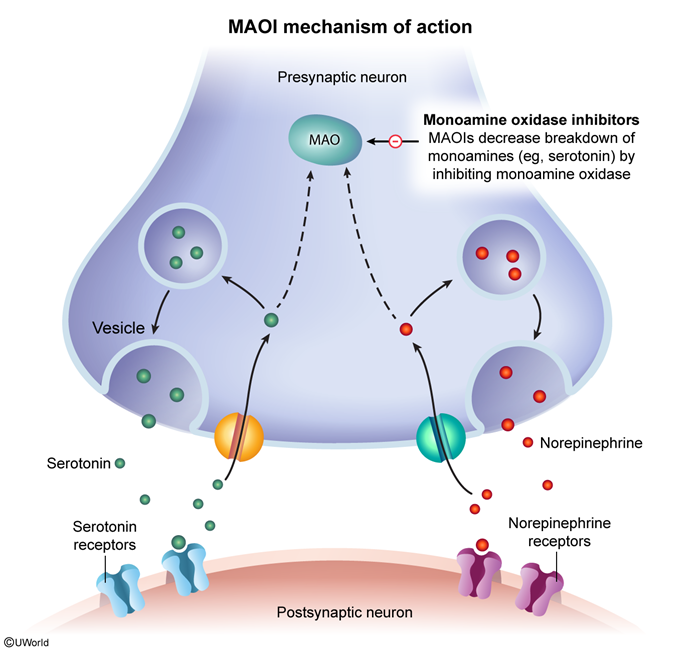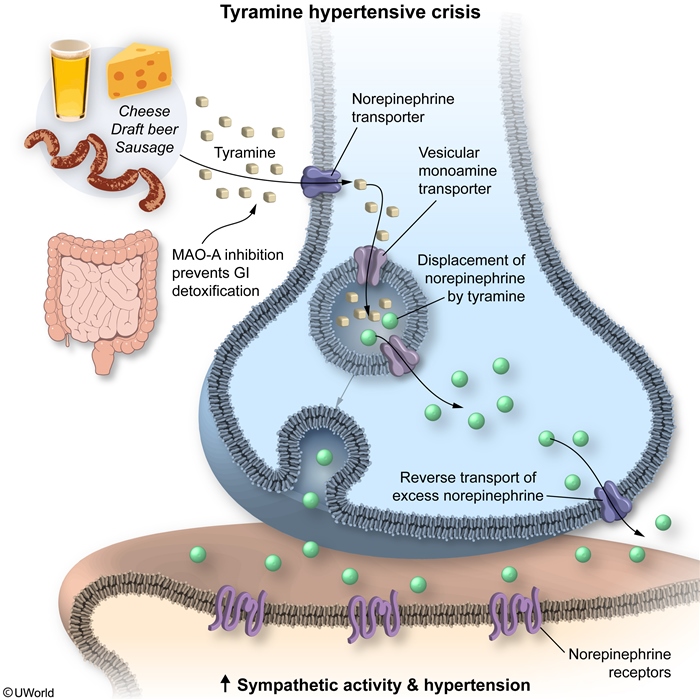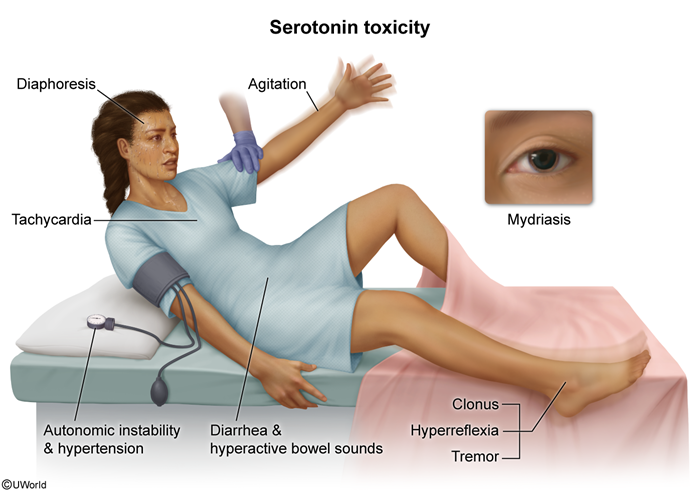Monoamine Oxidase Inhibitors (MAOIs)
Article Sections
Introduction
Monoamine oxidase inhibitors (MAOIs) increase concentrations of dopamine, norepinephrine, and serotonin (ie, monoamine neurotransmitters). They are effective for depressive disorders though are reserved for treatment-resistant cases due to the risk of severe adverse effects, including serotonin syndrome and hypertensive crisis.
Mechanism of action
Monoamine oxidase (MAO) is a mitochondrial enzyme that degrades serotonin, norepinephrine, and dopamine and can be found in multiple organs (eg, brain, intestines, heart). There are 2 types of MAO enzymes:
- MAO-A: Primarily breaks down serotonin, norepinephrine, and dopamine
- MAO-B: Primarily breaks down dopamine
MAOIs bind and inhibit both MAO-A and MAO-B (ie, are nonselective) (Figure 1). The resulting increase in presynaptic monoamine neurotransmitter levels and subsequent release into the synapse are thought to play a role in alleviating depressive symptoms.
Continue Learning with UWorld
Get the full Monoamine Oxidase Inhibitors (MAOIs) article plus rich visuals, real-world cases, and in-depth insights from medical experts, all available through the UWorld Medical Library.
Figures


